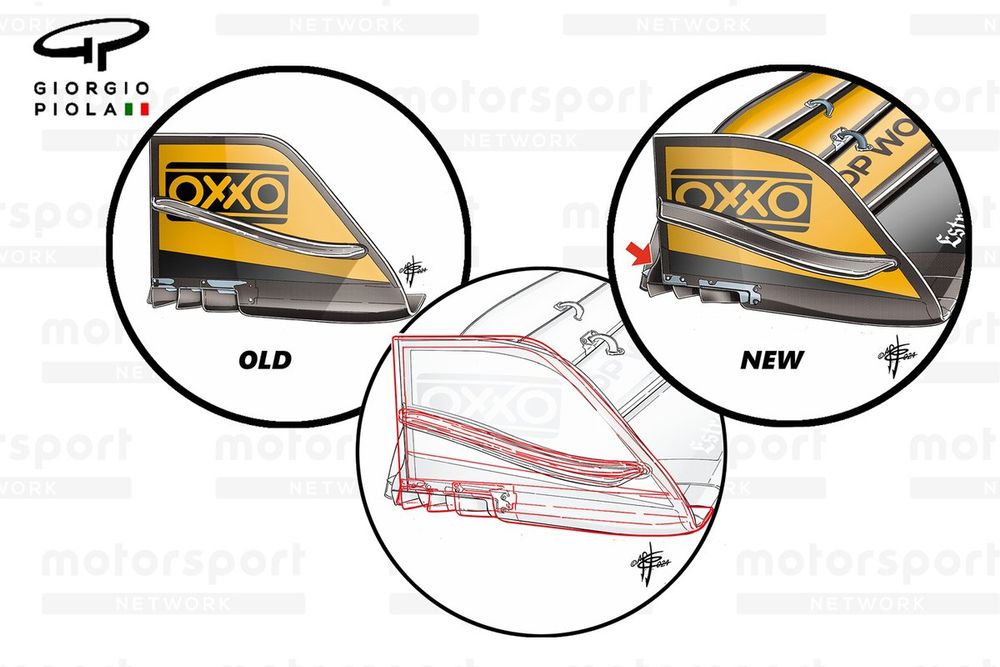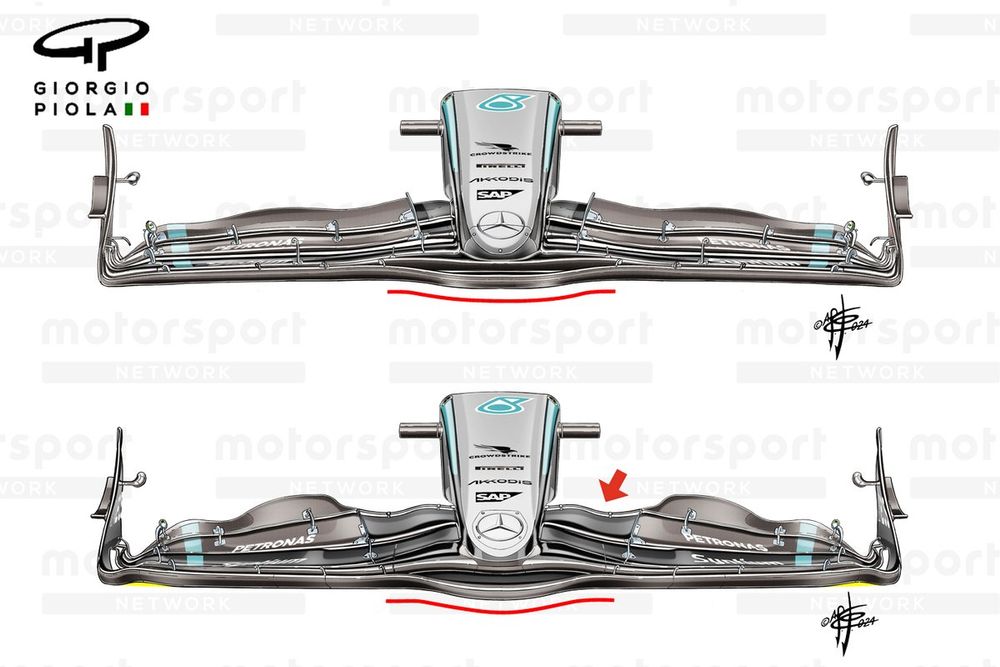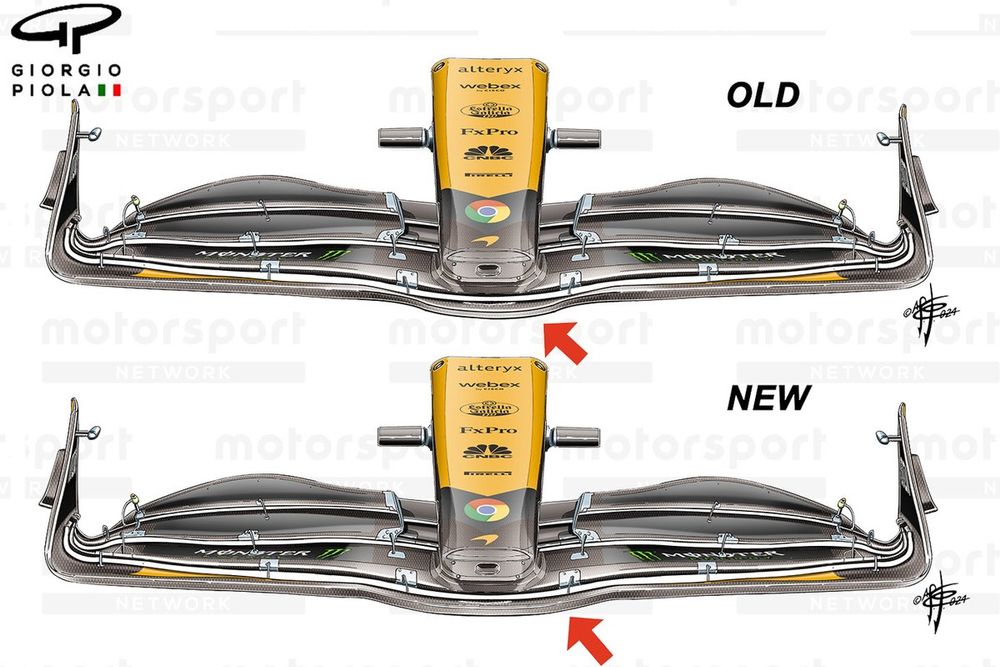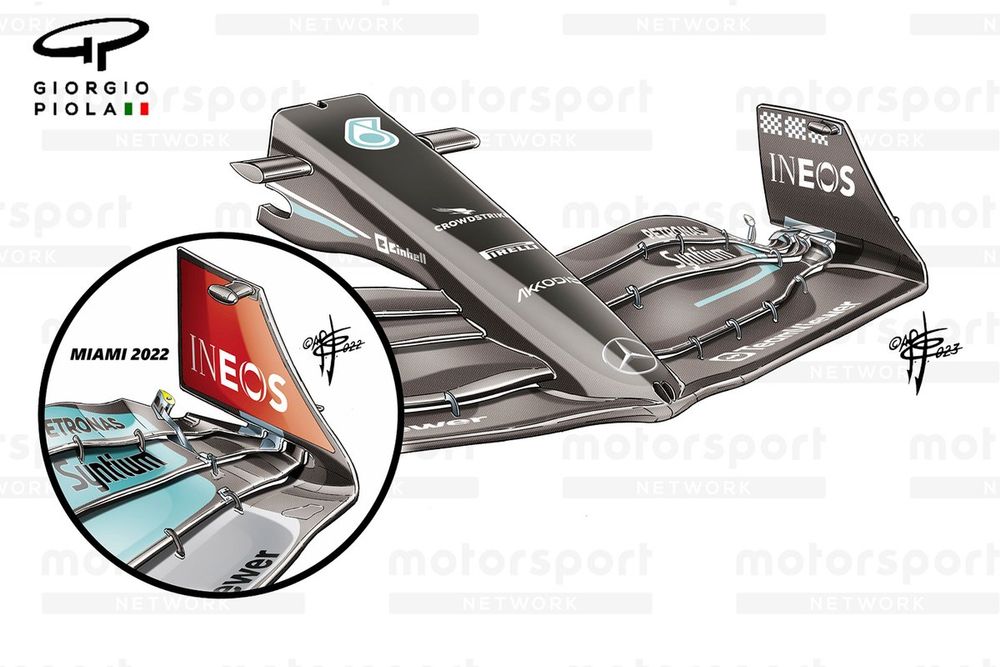Red Bull was the dominant force at the start of the Formula 1 season, with the squad so far ahead of the opposition that it was tipped to win all the races.
But things have turned on their heads in recent weeks with both McLaren and Mercedes making some dramatic progress and leaving Max Verstappen without a victory now since the Spanish Grand Prix.
While the issues at play for Red Bull involve the impact of upgrades it has brought this season not matching what its competitors have found, team boss Christian Horner has offered a fascinating clue about where he thinks the difference lies.
Pressed last weekend on an explanation for Red Bull’s drop of form, he suggested that it was simply a case of his teams’ rivals having found greater gains with a different concept of front wing.
“I think the front wing is a key area where others have found some performance,” explained Horner.
“The way that the front wings are being used are quite different. If you look at the front wing angle of McLaren and Mercedes, they’re very, very different. Very different to the rest of the group.”

Looking into the detail, architecturally there are indeed things that both Mercedes and McLaren are doing that Red Bull is not.
The most obvious of this is a trend that Mercedes introduced in 2022 and had to be adjusted to suit changes in the regulations for 2023.
This is the lower rear corner endplate cutout and semi-detached flap arrangement, which has also found itself adopted by other teams including McLaren.
The aim of it is to manipulate the airflow spilling around that section, which in-turn has an influence over the wake created by the tyre behind.
It’s not the only design aspect that separates Mercedes and McLaren’s front wing from Red Bull though, as the pair also treat the division between the static inboard section of the wing and the movable flaps differently too.
On the MCL38 and W15, there’s a more diagonal bias in the split between it and the moveable flap section beside. This results in a vortex being shed from the two metal separators on the end of each section.
This will be tuned to improve flow downstream to the floor and sidepod undercut. And, as can be observed from the nose mounted camera footage, the moveable flap section also backs off as speed builds to help with the challenge of fighting low speed understeer and high speed oversteer.


This movement (flexible wing if you want to call it…
Click Here to Read the Full Original Article at Motorsport.com – Formula 1 – Stories…

